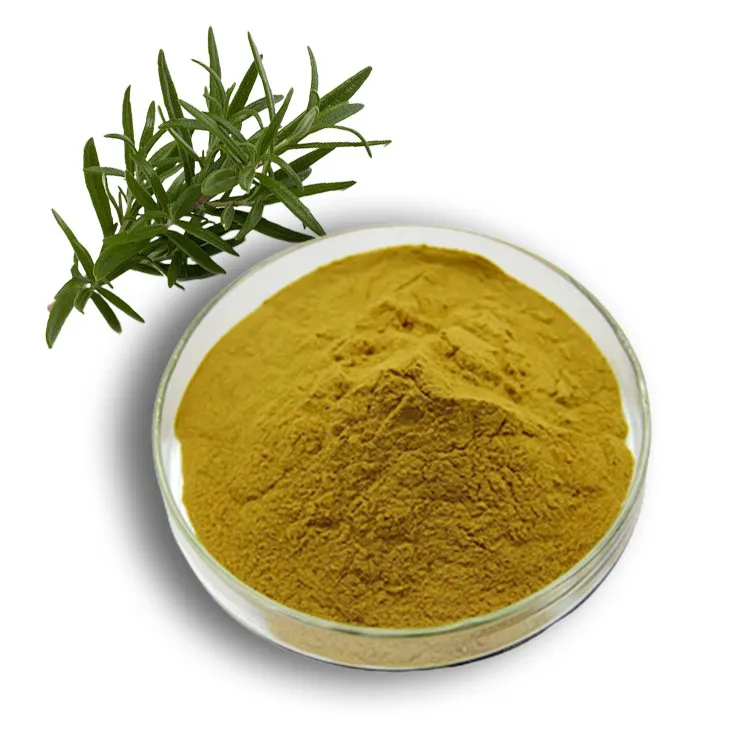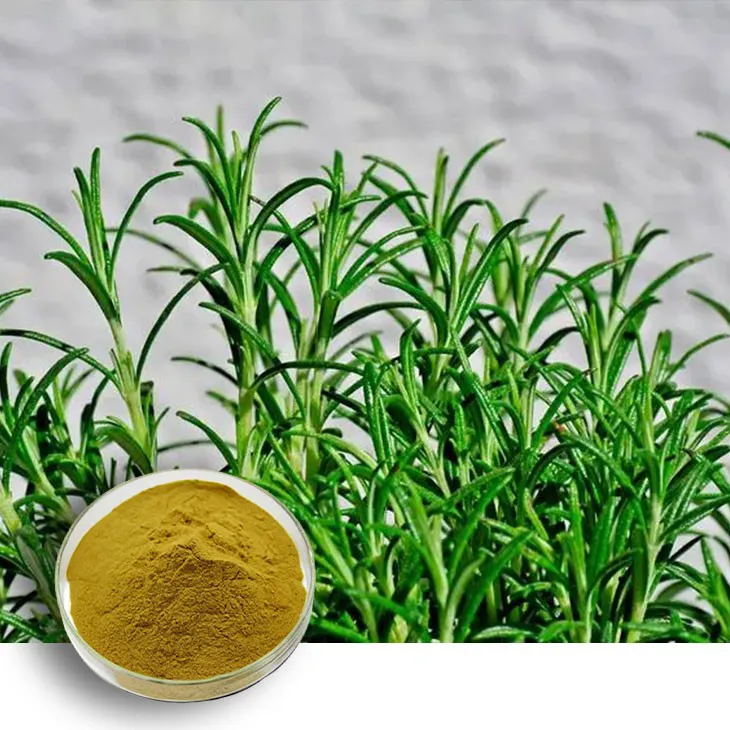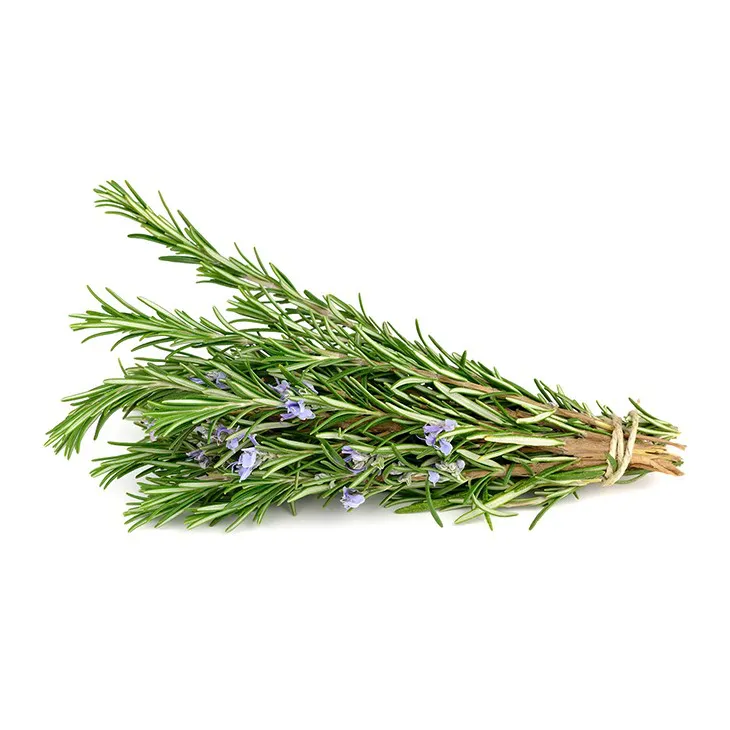- 0086-571-85302990
- sales@greenskybio.com
How to make powder with rosemary extract.
2024-11-26

1. Introduction
Rosemary extract is a valuable substance known for its rich content of antioxidants and various beneficial compounds. These properties make it highly desirable in a wide range of applications such as food, cosmetics, and medicine. Transforming Rosemary extract into powder form not only enhances its stability but also makes it more convenient for storage, transportation, and use in different products. However, the process of making powder from Rosemary extract requires careful attention to preserve its valuable properties.

2. The Extraction Process of Rosemary Extract
2.1 Selection of Raw Materials
The first step in obtaining high - quality rosemary extract is to select the right raw materials. Fresh rosemary should be chosen, preferably those that are organically grown. The quality of the rosemary directly affects the properties of the final extract. Look for rosemary with intact leaves, vibrant green color, and a strong aroma, which are signs of freshness and potency.
2.2 Solvent Extraction
- One common method of extracting rosemary extract is solvent extraction. Ethanol is often used as a solvent due to its ability to dissolve a wide range of the compounds present in rosemary. Firstly, the rosemary is finely chopped or ground into a coarse powder.
- Then, the ground rosemary is placed in a suitable container, and the ethanol is added in an appropriate ratio. A general ratio could be around 1:5 (rosemary to ethanol by weight), but this may vary depending on the specific extraction conditions.
- The mixture is then stirred thoroughly to ensure good contact between the rosemary and the solvent. This stirring can be done using a magnetic stirrer or a mechanical stirrer at a moderate speed for a certain period, typically around 2 - 4 hours.
- After the stirring process, the mixture is left to stand for a while, allowing the extract to fully dissolve into the solvent. This standing time can be about 1 - 2 hours.
- Finally, the liquid extract is separated from the solid residue through filtration. Filter paper or a filtration device can be used to obtain a clear rosemary - ethanol extract solution.
2.3 Supercritical Fluid Extraction
Another advanced method is supercritical fluid extraction, with carbon dioxide (CO₂) being the most commonly used supercritical fluid.
- Firstly, the rosemary is prepared in a similar way as in solvent extraction, by grinding it into a fine powder.
- The CO₂ is pressurized and heated to reach its supercritical state. In this state, CO₂ has the properties of both a liquid and a gas, which enables it to effectively extract the compounds from rosemary.
- The supercritical CO₂ is passed through the rosemary powder in an extraction chamber. The extraction conditions such as pressure, temperature, and flow rate of CO₂ need to be carefully controlled. For example, the pressure may range from 100 - 300 bar, and the temperature may be around 40 - 60 °C.
- As the CO₂ extracts the compounds from rosemary, the extract - laden CO₂ is then passed through a separator where the pressure is reduced. This causes the CO₂ to return to its gaseous state, leaving behind the rosemary extract.

3. Drying Techniques for Rosemary Extract
3.1 Spray Drying
- Spray drying is a popular method for converting the liquid rosemary extract into powder. In this process, the rosemary extract solution is first prepared in an appropriate concentration. If the extract was obtained through solvent extraction, the solvent may need to be partially evaporated to reach the desired concentration.
- The prepared extract solution is then pumped through a nozzle into a drying chamber. The nozzle atomizes the solution into fine droplets.
- Hot air is introduced into the drying chamber at a controlled temperature. The temperature of the hot air is crucial and typically ranges from 150 - 200 °C. The hot air rapidly dries the fine droplets of the extract, converting them into powder.
- The dried powder is then separated from the hot air using a cyclone separator or a filter. The collected powder is the rosemary extract powder.
3.2 Freeze Drying
- Freeze drying is another effective drying method for rosemary extract. First, the rosemary extract solution is frozen. This can be done in a freezer or a specialized freeze - drying equipment at a very low temperature, usually below - 40 °C.
- Once frozen, the pressure in the chamber is reduced. This creates a vacuum environment which causes the ice in the frozen extract to sublime directly from the solid state to the gaseous state without passing through the liquid state.
- As the ice sublimes, the water content in the extract is removed, leaving behind the dried rosemary extract in powder form.
3.3 Vacuum Drying
- Vacuum drying is also applicable for rosemary extract. The rosemary extract is placed in a drying chamber, and the air in the chamber is removed to create a vacuum environment.
- Heat is then applied at a controlled temperature. The temperature is usually lower than that in spray drying, typically around 60 - 100 °C. This lower temperature helps to preserve the beneficial compounds in the rosemary extract.
- Under the vacuum and heat, the moisture in the extract is gradually removed, resulting in the formation of powder.

4. Necessary Equipment for Making Rosemary Extract Powder
4.1 Extraction Equipment
- For solvent extraction, a glass beaker or a stainless - steel container is needed for mixing the rosemary and the solvent. A magnetic stirrer or a mechanical stirrer is also required to ensure proper mixing.
- If using supercritical fluid extraction, a specialized supercritical fluid extraction apparatus is necessary. This equipment is designed to control the pressure, temperature, and flow rate of the supercritical fluid accurately.
4.2 Drying Equipment
- For spray drying, a spray dryer is the key equipment. It consists of a nozzle for atomizing the extract solution, a drying chamber for drying the droplets, and a separator for collecting the dried powder.
- In the case of freeze drying, a freeze dryer is used. This equipment has a freezing chamber, a vacuum system, and a condenser to handle the sublimation process.
- For vacuum drying, a vacuum oven is required. It can create and maintain a vacuum environment while applying heat to dry the extract.
4.3 Filtration and Separation Equipment
- During the extraction process, filter paper or a filter funnel is needed for separating the liquid extract from the solid residue. A Buchner funnel with a vacuum pump can also be used for more efficient filtration.
- After drying, a cyclone separator or a fine - mesh sieve can be used to separate the dried powder from any remaining air or impurities.

5. Preserving the Valuable Properties of Rosemary Extract during the Powder - making Process
5.1 Temperature Control
- During drying, especially in spray drying and vacuum drying, temperature control is crucial. Excessive heat can cause the degradation of the antioxidants and other beneficial compounds in rosemary extract. For example, in spray drying, the temperature should not be too high to avoid over - drying and heat - induced chemical changes.
- Similarly, in vacuum drying, maintaining an appropriate temperature helps to preserve the integrity of the extract. By carefully controlling the temperature, the valuable properties of the rosemary extract can be retained in the powder form.
5.2 Oxygen Exposure
- Minimizing oxygen exposure is important throughout the powder - making process. Oxygen can react with the compounds in the rosemary extract, leading to oxidation and loss of their beneficial properties. During extraction, if possible, the process can be carried out in a nitrogen - filled environment to reduce oxygen contact.
- During drying and storage of the powder, using air - tight containers can prevent oxygen from entering and reacting with the extract powder.
5.3 pH Adjustment
- The pH of the rosemary extract solution can also affect the stability of its compounds. Maintaining an appropriate pH range can help to preserve the valuable properties. For example, a slightly acidic pH may be beneficial for some of the antioxidant compounds in rosemary extract.
- During the extraction process, if necessary, acids or bases can be added in small amounts to adjust the pH to the optimal range.
6. Applications of Rosemary Extract Powder in Different Fields
6.1 Food Industry
- Rosemary extract powder can be used as a natural antioxidant in food products. It helps to prevent the oxidation of fats and oils, thereby extending the shelf life of foods such as bakery products, fried foods, and processed meats.
- It can also be added to seasonings and spices to enhance the flavor and aroma of food. The unique herbal flavor of rosemary can add a pleasant and natural taste to various dishes.
6.2 Cosmetics Industry
- In cosmetics, rosemary extract powder is valued for its antioxidant and anti - inflammatory properties. It can be incorporated into skincare products such as creams, lotions, and serums to protect the skin from free - radical damage and reduce inflammation.
- It is also used in haircare products. For example, in shampoos and conditioners, it can help to improve scalp health, promote hair growth, and add shine to the hair.
6.3 Medicine Industry
- Some studies suggest that rosemary extract powder may have potential health benefits in the medical field. It may have antibacterial and antifungal properties, which could be explored for the development of new drugs or as natural additives in medicinal products.
- It may also have potential in the treatment of certain neurodegenerative diseases due to its antioxidant properties, although more research is needed in this area.
7. Conclusion
Making powder from rosemary extract involves a series of important steps including extraction, drying, and proper equipment use. By carefully following these processes and taking measures to preserve the valuable properties of the extract, high - quality rosemary extract powder can be obtained. This powder has wide - ranging applications in food, cosmetics, and medicine, making it a valuable substance in various industries. Continued research and development in this area are expected to further explore the potential of rosemary extract powder and expand its applications.
FAQ:
What are the main components in rosemary extract?
Rosemary extract contains a variety of components. Key among them are antioxidants such as rosmarinic acid, carnosic acid, and carnosol. These components are responsible for many of the extract's beneficial properties, including anti - inflammatory, antimicrobial, and antioxidant effects.
What are the suitable drying techniques for making rosemary extract powder?
There are several drying techniques suitable for making rosemary extract powder. One common method is freeze - drying. Freeze - drying helps to preserve the bioactive compounds in the extract as it removes water without subjecting the extract to high heat, which could potentially damage its beneficial properties. Another method is spray - drying. Spray - drying involves atomizing the liquid extract into a hot air stream, where the water quickly evaporates, leaving behind the powdered form. However, care must be taken to ensure that the temperature and drying conditions do not cause degradation of the active components.
What equipment is needed to make powder from rosemary extract?
For making powder from rosemary extract, you will need certain basic equipment. If using the freeze - drying method, a freeze - dryer is essential. This machine creates a low - temperature and low - pressure environment to remove water from the extract. In the case of spray - drying, a spray - dryer is required. Additionally, you will need equipment for the initial extraction process, such as a Soxhlet extractor (if using a solvent - based extraction method), and filtering equipment to separate the extract from any impurities or solid residues.
How can we ensure the antioxidant properties are retained during the powder - making process?
To ensure the antioxidant properties are retained during the powder - making process, it is crucial to control the processing conditions. As mentioned before, using gentle drying methods like freeze - drying can help. Also, minimizing exposure to oxygen, light, and high temperatures during the entire process is important. Using proper packaging materials that are oxygen - impermeable can also help in preserving the antioxidant properties once the powder is made.
What are the potential applications of rosemary extract powder in the food industry?
In the food industry, rosemary extract powder has several potential applications. It can be used as a natural preservative due to its antioxidant and antimicrobial properties. It can also be added to various food products like meat, poultry, and baked goods to enhance their flavor and shelf - life. Additionally, it can be used in the production of functional foods and dietary supplements, as it contains beneficial compounds that may have health - promoting effects.
Related literature
- The Chemistry and Bioactivity of Rosemary Extracts"
- "Rosemary Extract: Production, Properties and Applications"
- "Drying Techniques for Herbal Extracts: A Review with Special Focus on Rosemary"
- ▶ Hesperidin
- ▶ citrus bioflavonoids
- ▶ plant extract
- ▶ lycopene
- ▶ Diosmin
- ▶ Grape seed extract
- ▶ Sea buckthorn Juice Powder
- ▶ Beetroot powder
- ▶ Hops Extract
- ▶ Artichoke Extract
- ▶ Reishi mushroom extract
- ▶ Astaxanthin
- ▶ Green Tea Extract
- ▶ Curcumin Extract
- ▶ Horse Chestnut Extract
- ▶ Other Problems
- ▶ Boswellia Serrata Extract
- ▶ Resveratrol Extract
- ▶ Marigold Extract
- ▶ Grape Leaf Extract
- ▶ blog3
- ▶ blog4
-
Chinese Withania somnifera Extract Factory.
2024-11-26
-
中国松树皮提取物粉粉末供应商
2024-11-26
-
High - quality Marigold Extract Products.
2024-11-26
-
100% Pure Natural Mango - Flavored Powder.
2024-11-26
-
Shikonin
2024-11-26
-
Diosmin
2024-11-26
-
Artichoke Extract
2024-11-26
-
American Ginseng Root Extract
2024-11-26
-
Apricot Powder
2024-11-26
-
Phyllanthus Emblica Extract
2024-11-26
-
Senna Leaf Extract
2024-11-26
-
Curcuma Longa Extract
2024-11-26
-
Chia Seed Powder
2024-11-26
-
Lemon Balm Extract
2024-11-26





















